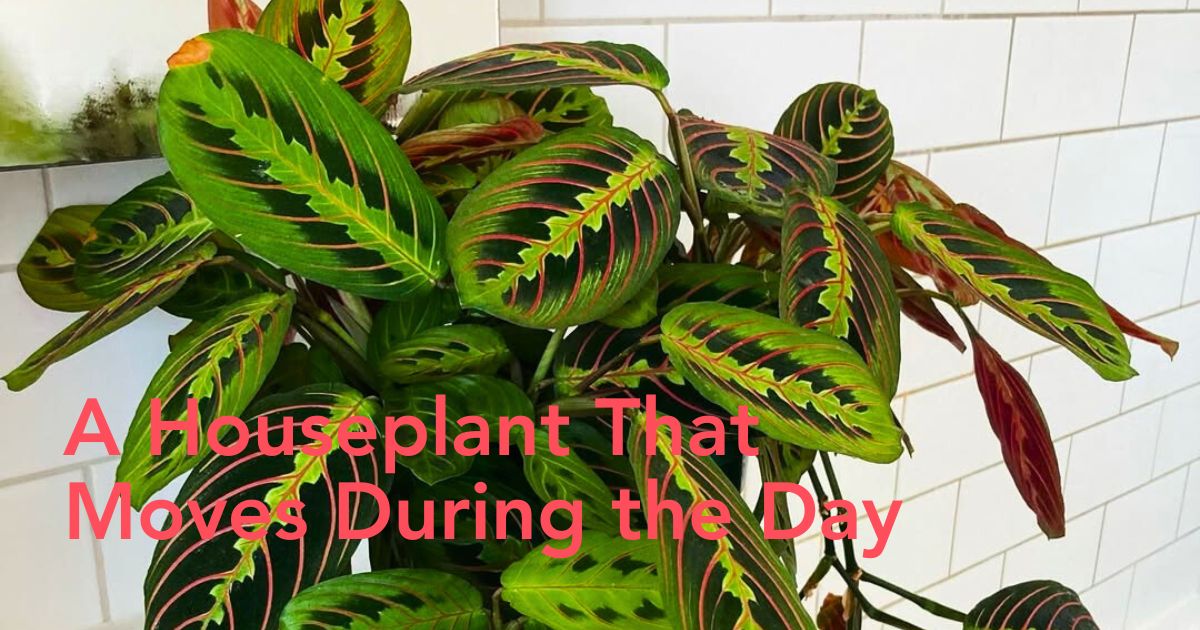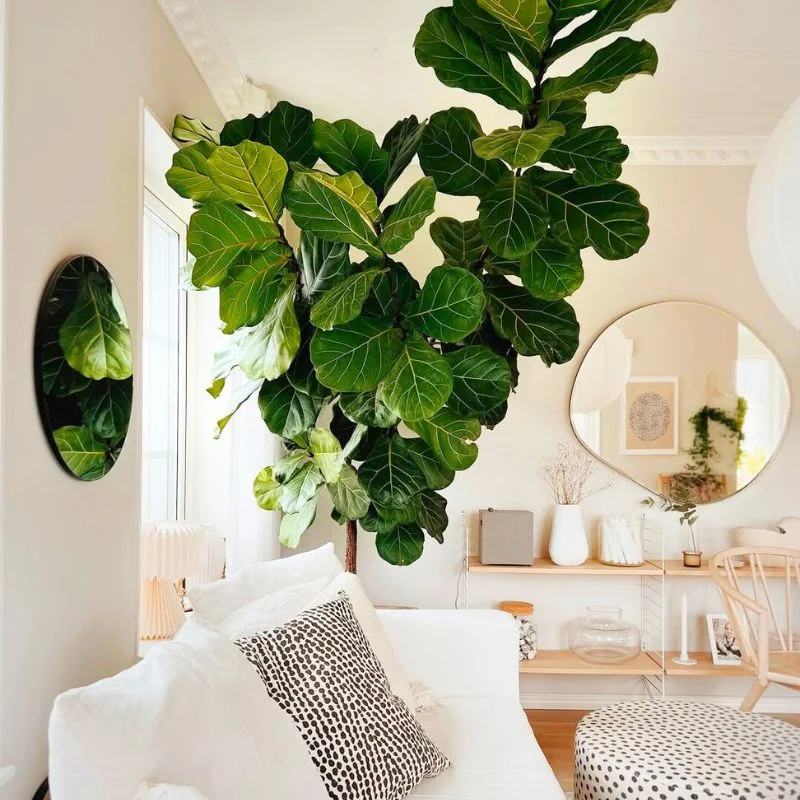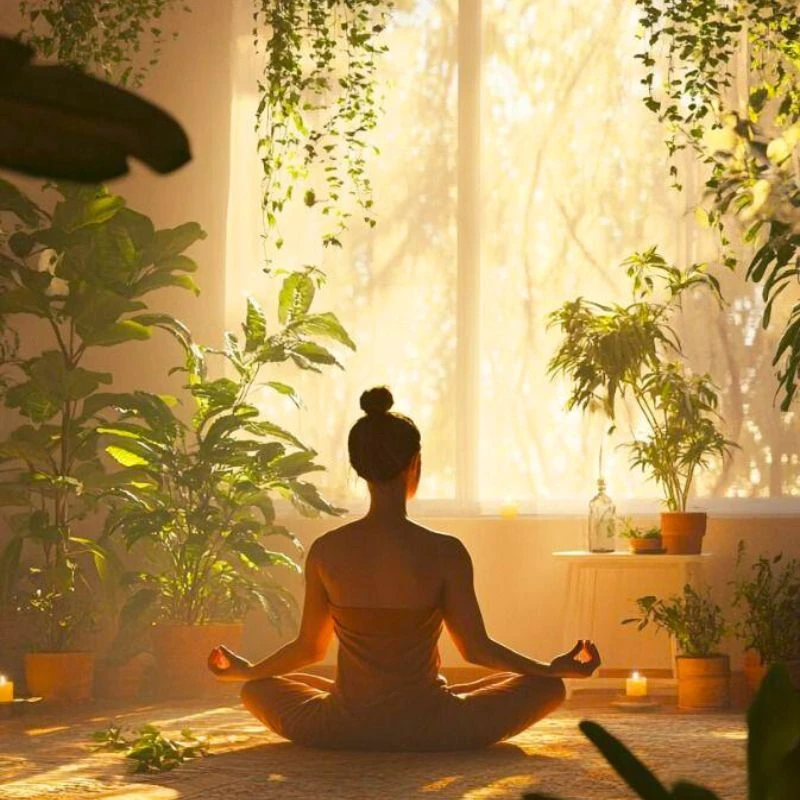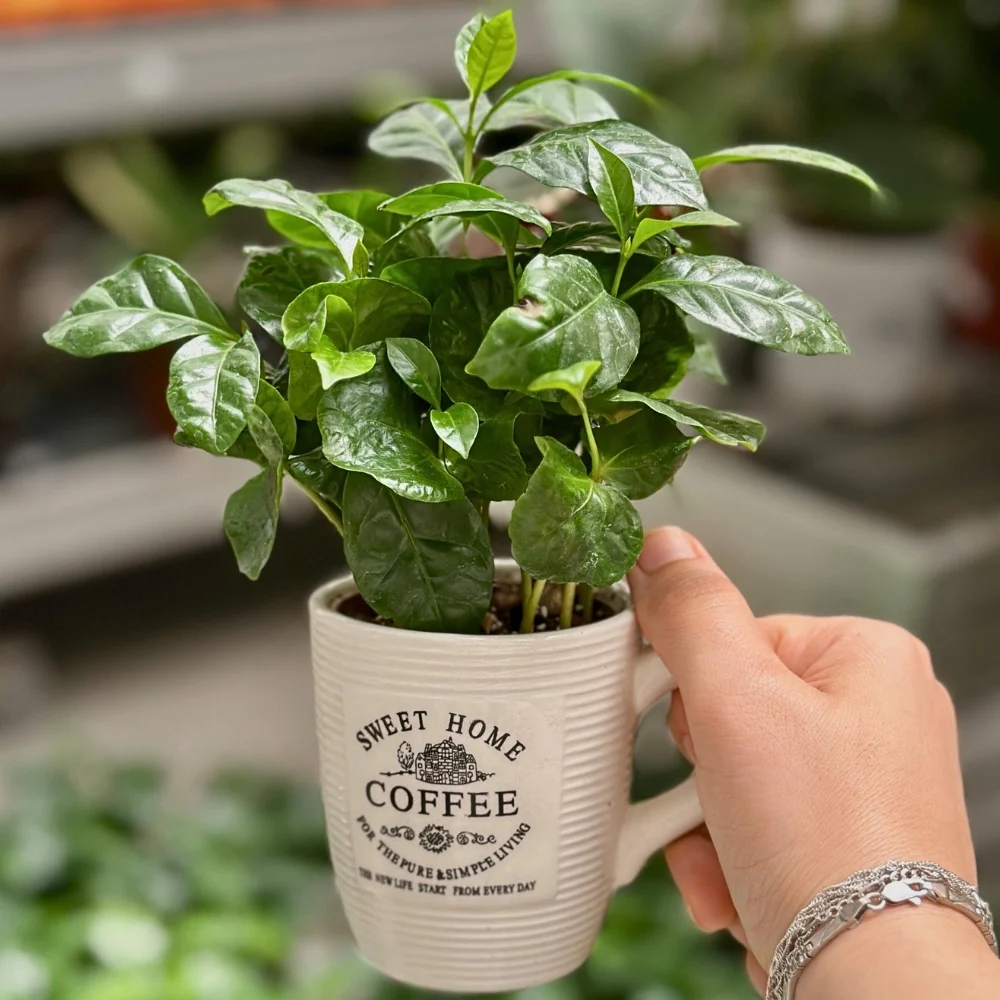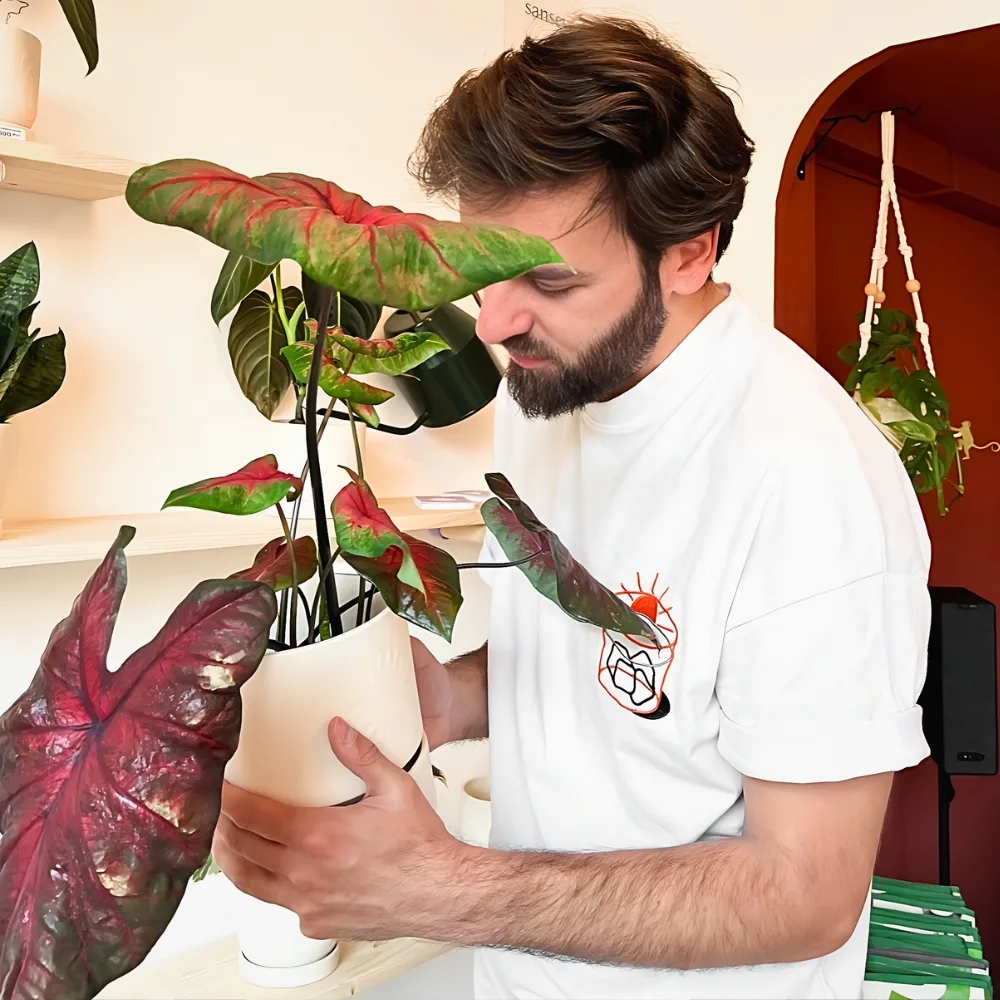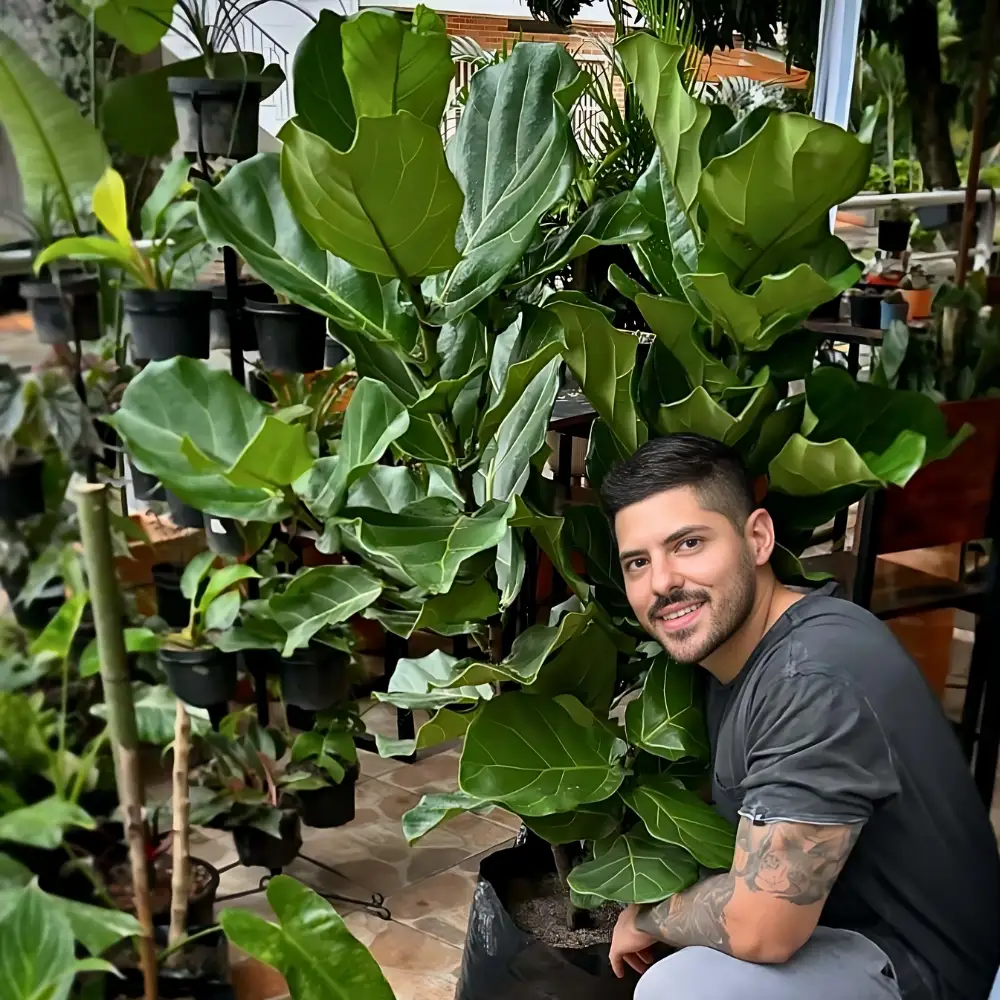With folding leaves, the prayer plant is a fascinating and distinctive houseplant to have at home. The interesting internal shapes, lines, and colors are what make the prayer plant a must-have nowadays. Plus, it gets its name from a very interesting perspective. Here's everything you need to know about this thrilling houseplant.
The Prayer Plant in Detail
Who doesn't love the presence of green houseplants? The world is the greenest green we've ever seen, and houseplants are rapidly invading every space of every home. They're a must-have nowadays, and the prayer plant is no exception. It is not the usual 'all-green' plant, but rather exuberates curious inner colors, lines, and shapes, which is what actually calls the attention of many plant parents.
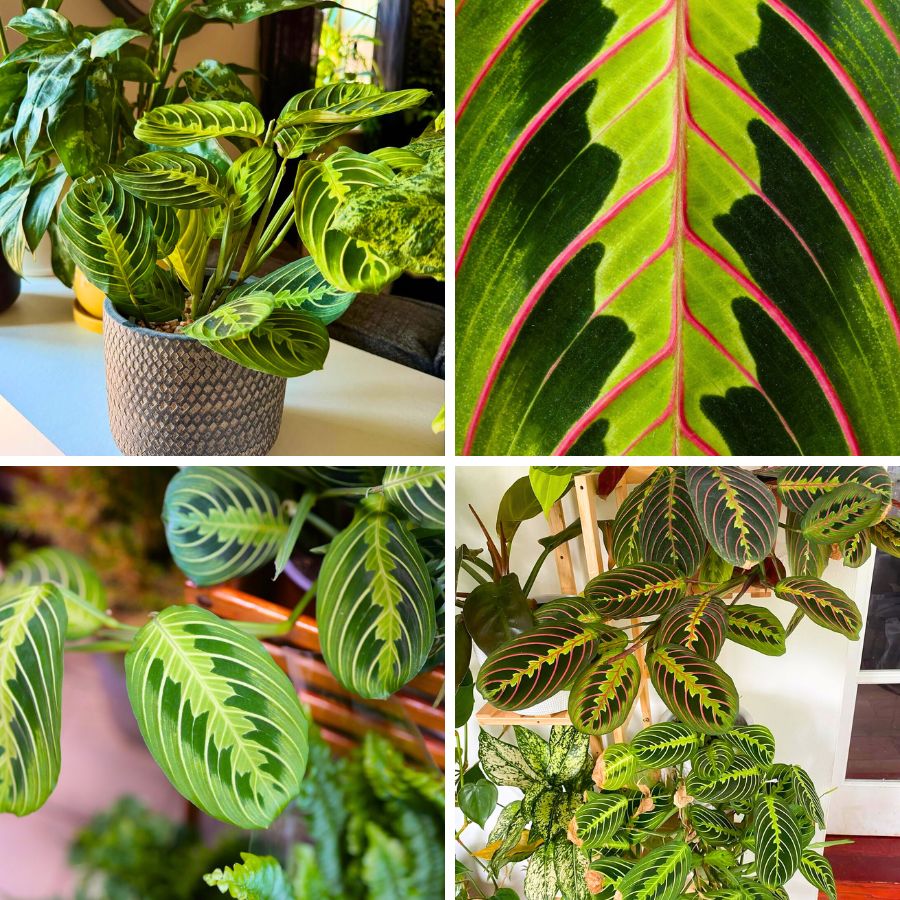
The oval-shaped, patterned foliage of the prayer plant has earned it a favored spot among houseplants. Whether you are just starting out with houseplants or are an expert grower, it is an ideal choice to start with. Given the right light, moisture, and temperature, they will thrive, but the care handling comes later. It's time to dig more into the background of this houseplant. See also '15 Rare Houseplants You Will Love' to find a few more to add to your spaces.
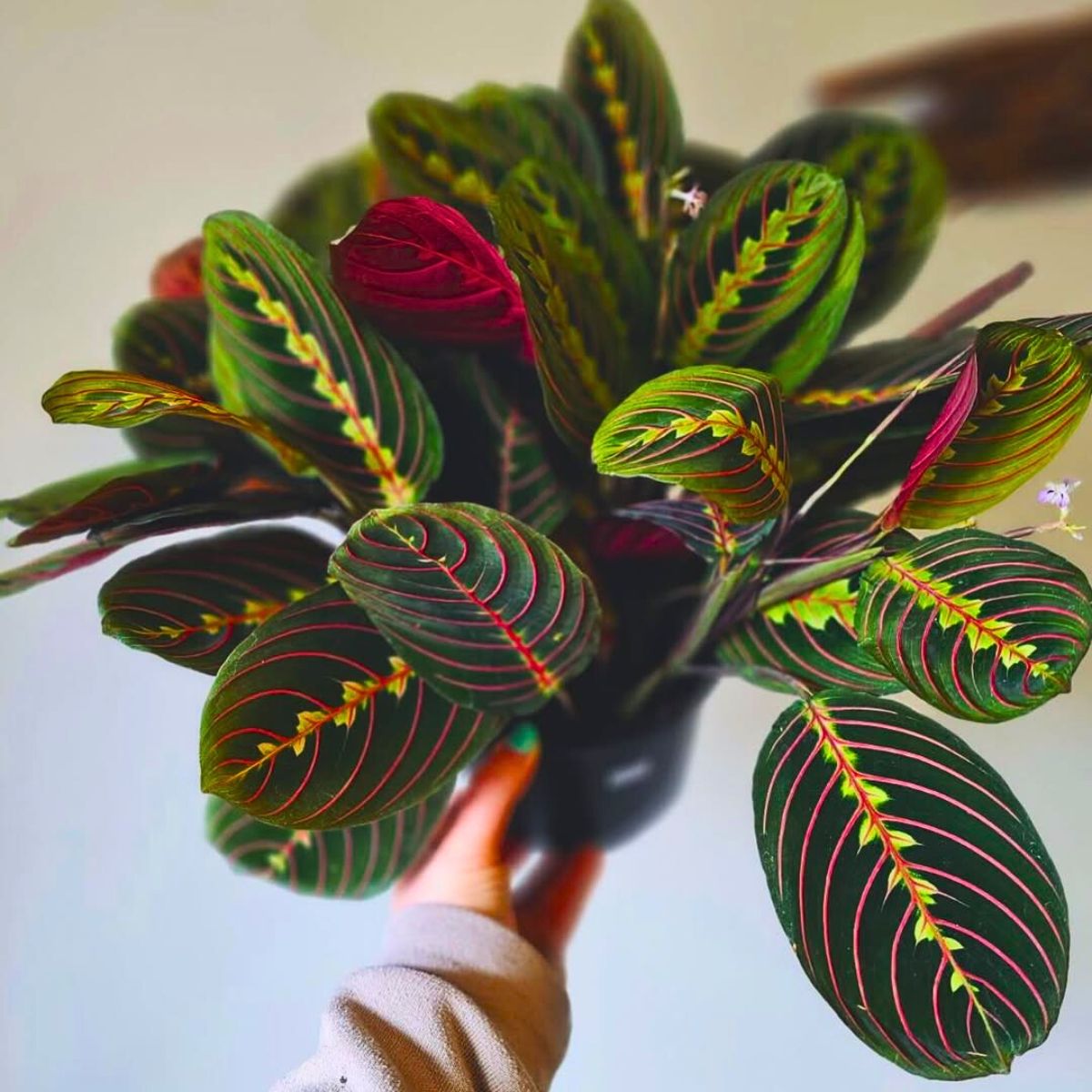
Why the Prayer Plant Deserves a Spot in Your Home
The prayer plant is one of the most easily recognized tropical plants because of its ornamental leaves. The common tricolor cultivar has velvety, deep green leaves with yellow spots running down the midrib and arcing red veins extending to the leaf borders. This plant grows slowly but in the end reaches a height of up to 0.3 meters (1 foot).
Although they can be grown inside at any time of the year and are quite popular as houseplants, they are not always simple to maintain in terms of long-term growth, but it's important to differentiate that they are indeed easy-to-care-for houseplants. Read the article 'Houseplants With the Most Unique Leaves' to see what other plants have such rare but beautiful leaves.
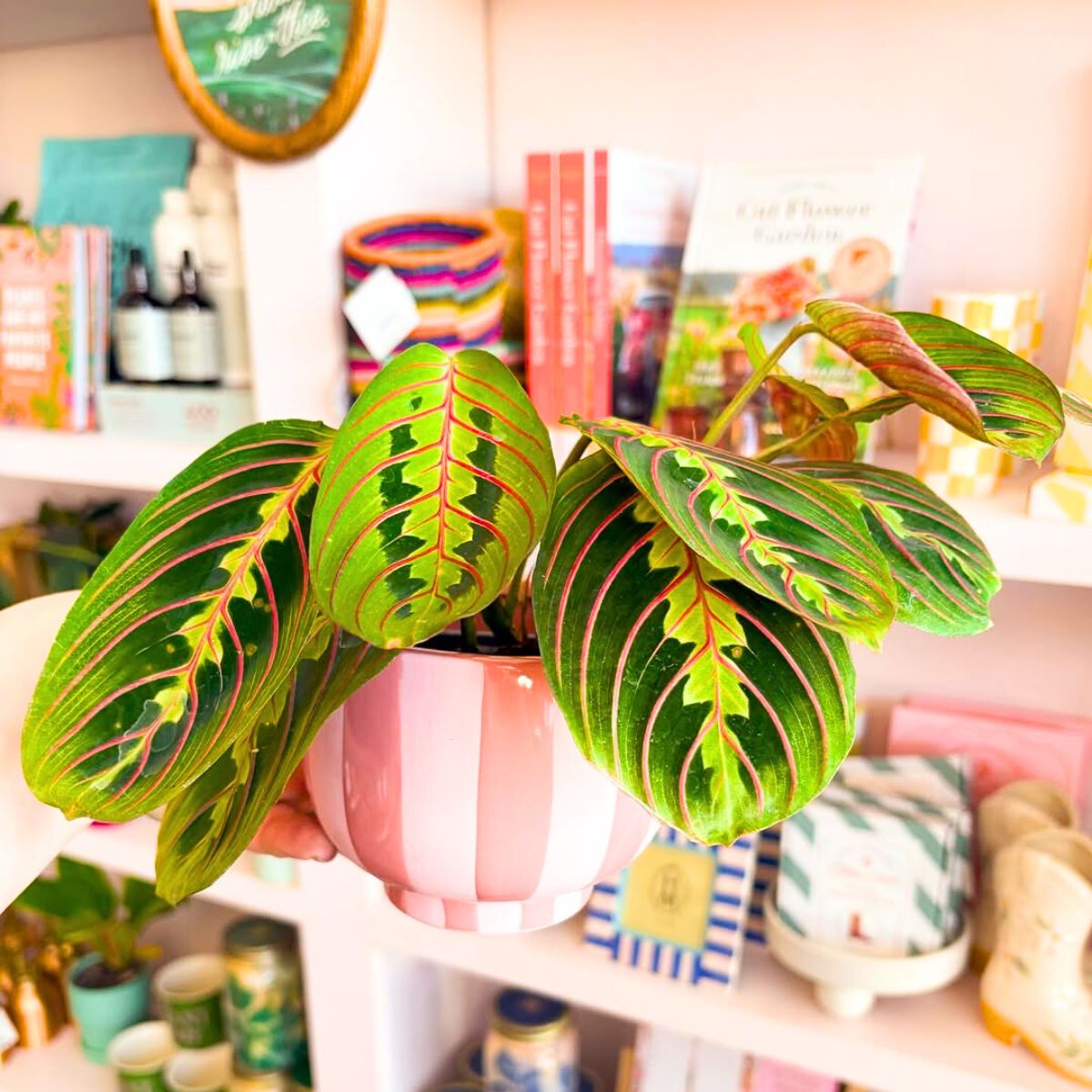
History and Symbolism of the Prayer Plant
The prayer plant, scientifically known as Maranta leuconeura, is a perennial flowering plant species that is a member of the Marantaceae botanical family and is indigenous to tropical South America, the West Indies, Asia, and Africa. The broad, oval, variegated leaves of this tropical plant are quite lovely and attractive, but what makes them exceptional is what lies beneath.
It is native to the tropical regions of Brazil, specifically found in the Amazon rainforest. It thrives in the humid, shaded undergrowth of these forests, where it has adapted to low light conditions. It was first introduced to the Western world in the 18th century, around the time of European botanical expeditions, and quickly became popular among collectors due to its beautiful leaves.
The name 'prayer plant' comes from the plant’s unique leaf movement. During the day, its leaves lie flat, but at night, they fold upwards, almost as though they are praying. This behavior is caused by the plant's nyctinasty, a process in which the leaves adjust their position in response to the changing light. This makes is a natural marvel and a beloved species for plant lovers.
Symbolism and Cultural Significance
The prayer plant is often associated with spirituality and prayer, owing to its name and its behavior. The folding of its leaves at night is seen as a symbolic gesture of reverence, quiet reflection, or meditation, making it a plant that many consider to be a symbol of peace and contemplation. In some cultures, the Prayer Plant is believed to bring good luck and positive energy, and is commonly found in homes as a symbol of tranquility and harmony.
In Brazilian folklore, plants like the prayer plant are considered sacred and are thought to have protective qualities, guarding the home from negative energy. The symbolism of prayer also extends to the belief that the plant helps create a peaceful atmosphere, making it ideal for spaces where individuals seek relaxation, focus, or inner calm.
In the Victorian era, during the period of language of flowers, plants were often given symbolic meanings. Though this plant wasn't as widely recognized in Western gardens at that time, its association with prayer would likely have made it a symbol of devotion or gratitude.
Today, the prayer plant is widely recognized as a low-maintenance indoor plant that serves not only as a visual delight but also as a gentle reminder of nature's beauty and the quiet moments of reflection in everyday life.
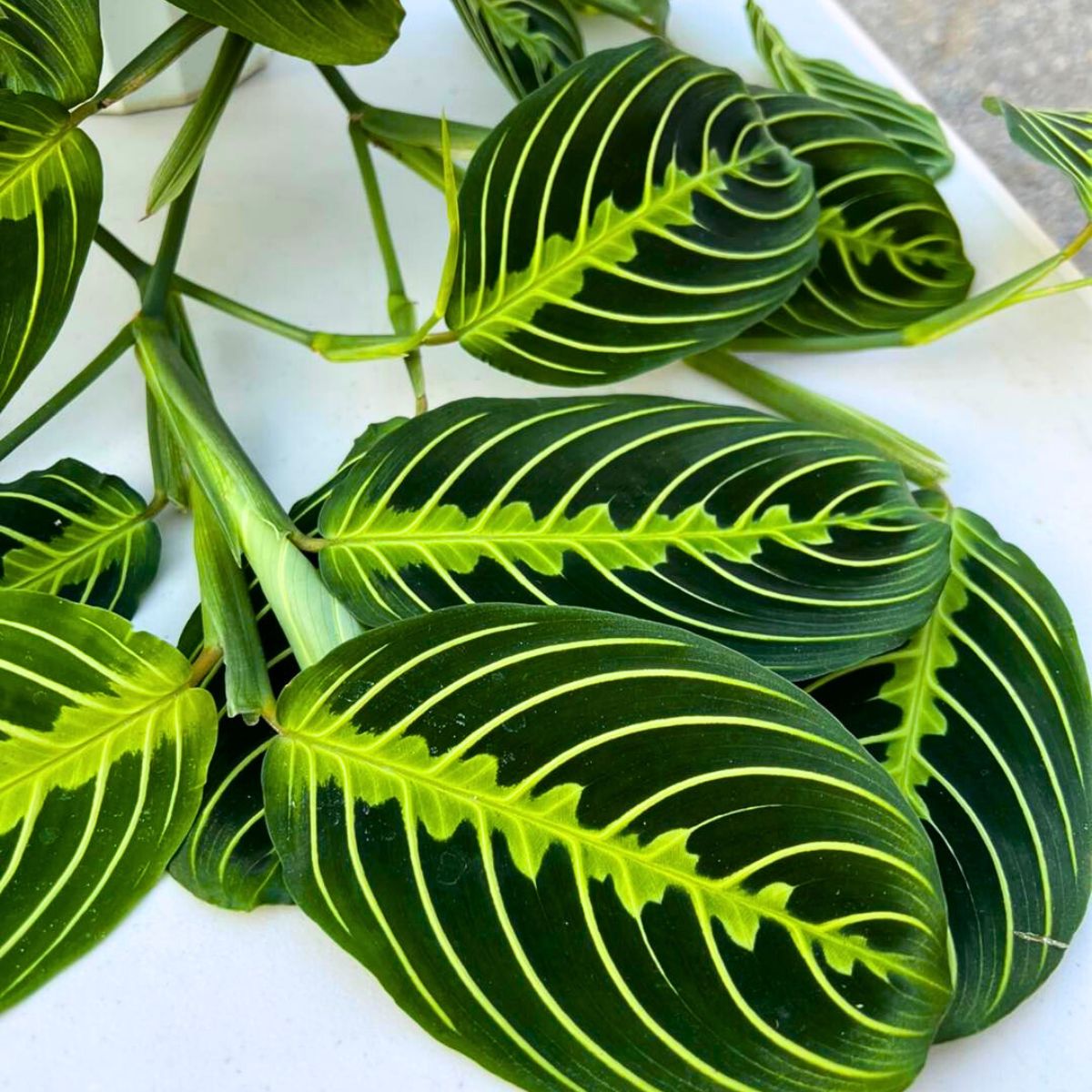
How Should You Care for a Prayer Plant?
Low-growing, spreading prayer plants do best in greenhouse-like circumstances, which include warm, wet, soft airflow and lots of fertilizer. The plant may collapse or die from root rot in poorly drained soil. Similar to how plants can become washed out and get brown patches on their leaves from too much sun exposure. These are the specific care handles you should follow to have your prayer plant give you its best every single day.
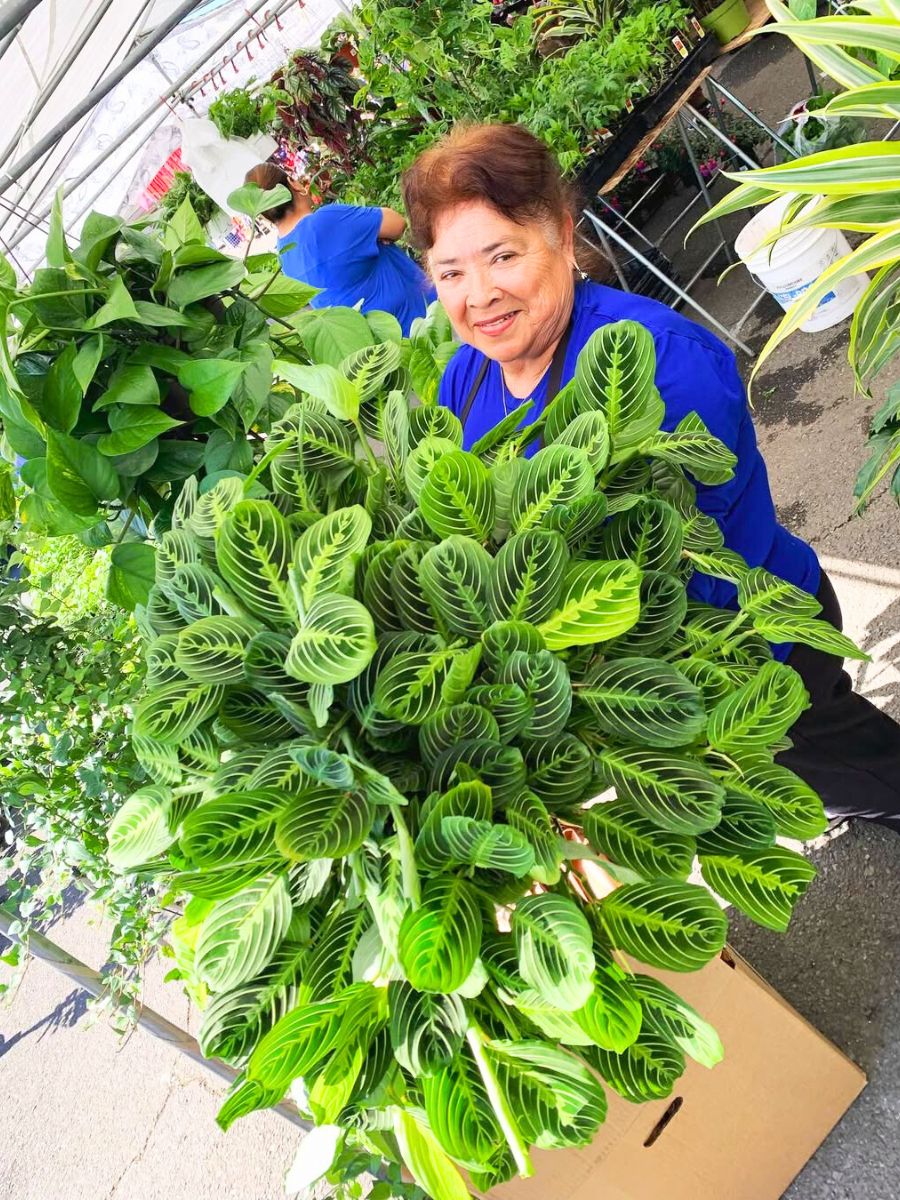
Light Requirements
Your prayer plant should be hung or placed close to a window so it may get some filtered light. Never place your plant in direct sunlight as this may cause the leaves to burn, develop spots or blotches, or lose color intensity. In general, prayer plants can tolerate locations with less light. During the winter, when the plants become dormant (and occasionally fully die back), give them intense light to keep them growing.
Water Requirements
Water your prayer plant frequently throughout the growing season, especially when the top layer becomes dry, and never let the potting soil get entirely dry. Due to their vulnerability to drought, these plants cannot be left unwatered for an extended period of time.
However, avoid letting water sit directly on the leaves or allowing the plant to become wet to prevent fungal issues. Use water that is at least room temperature, if not slightly warm, while watering your prayer plant. Both insufficient water and overwatering your plant can result in the leaves becoming yellow and dropping.
Temperature and Humidity
The ideal temperature range for prayer plants is between 15 and 25 degrees Celsius. Lower temperatures for an extended period of time can harm the leaves and make them fall off the plant. Additionally, prayer plants do best in an area that is quite humid. You can put a tiny humidifier nearby or set the plant on a tray that has water and small stones in it to boost the humidity that is available to it. You can also often spritz the leaves with warm or room-temperature water.
How to Fertilize Your Prayer Plant
From early spring through fall, fertilize your prayer plant every two weeks (cutting back to once a month in winter) using a water-soluble houseplant fertilizer diluted to half-strength. Your plant will grow slowly or not at all if you apply too little fertilizer. But too much fertilizer can damage the plant's roots, turning its leaves brown and possibly killing it.
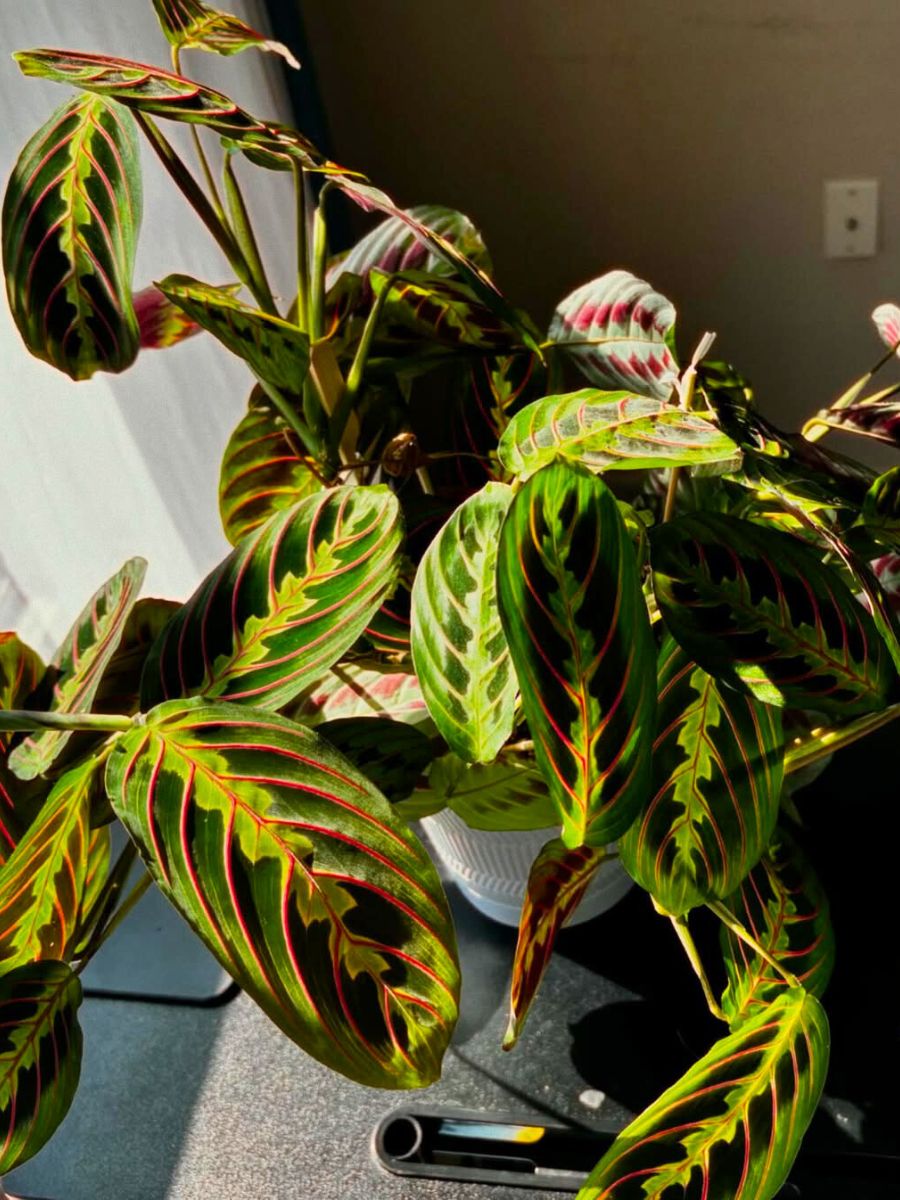
Most Popular Types of Prayer Plants
Although there are several different types of prayer plants, the tricolor variety that is sold at many garden centers is by far the most popular. It is typical for prayer plants and calathea plants to be misidentified because they are so closely related to one another. The following species are the most prevalent ones in the Maranta genus:
Maranta Leuconeura Erythrophylla
The most popular type of this tricolored prayer plant, often known as the herringbone plant, has striking red veins.
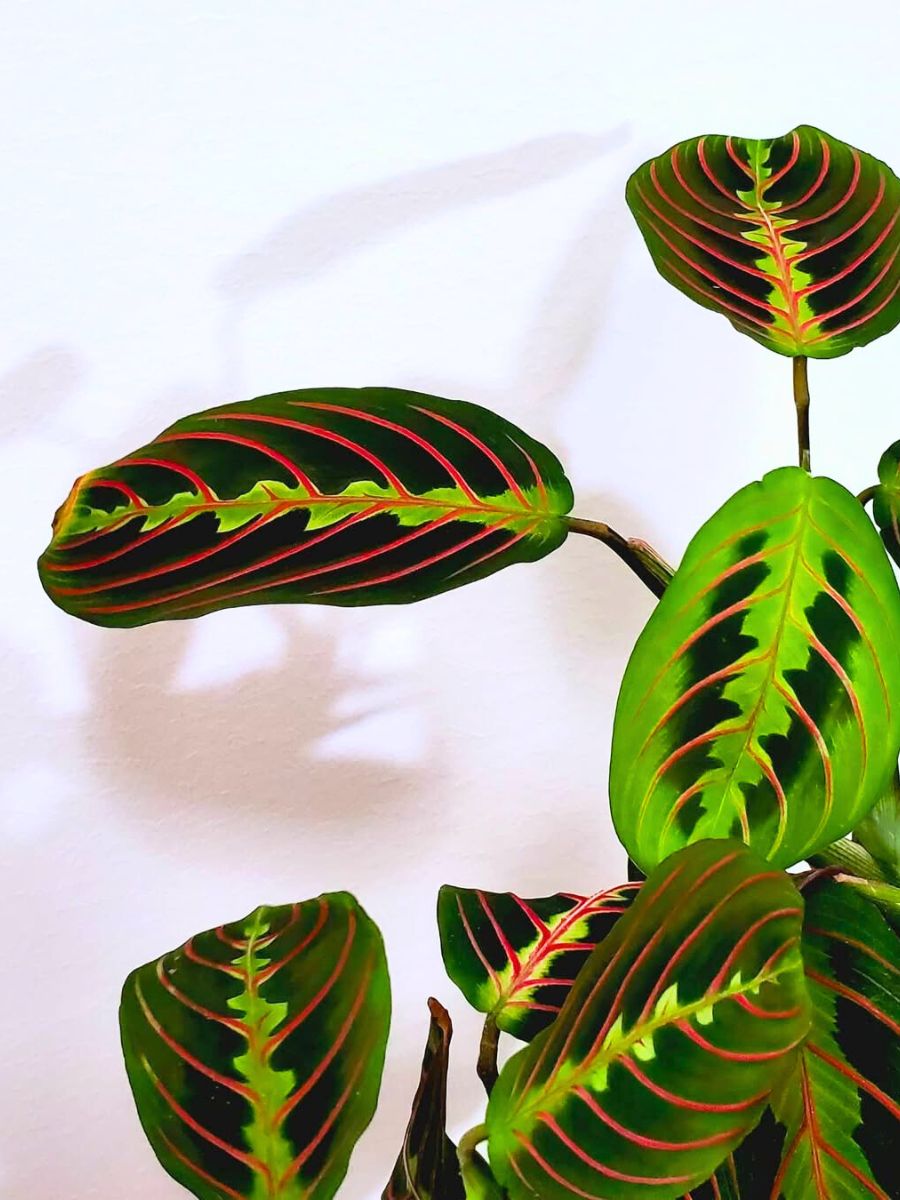
Maranta Leuconeura Kerchoveana
This type of prayer plant has plain green leaves with two rows of darker splotches. It is also referred to as Rabbit's Tracks.
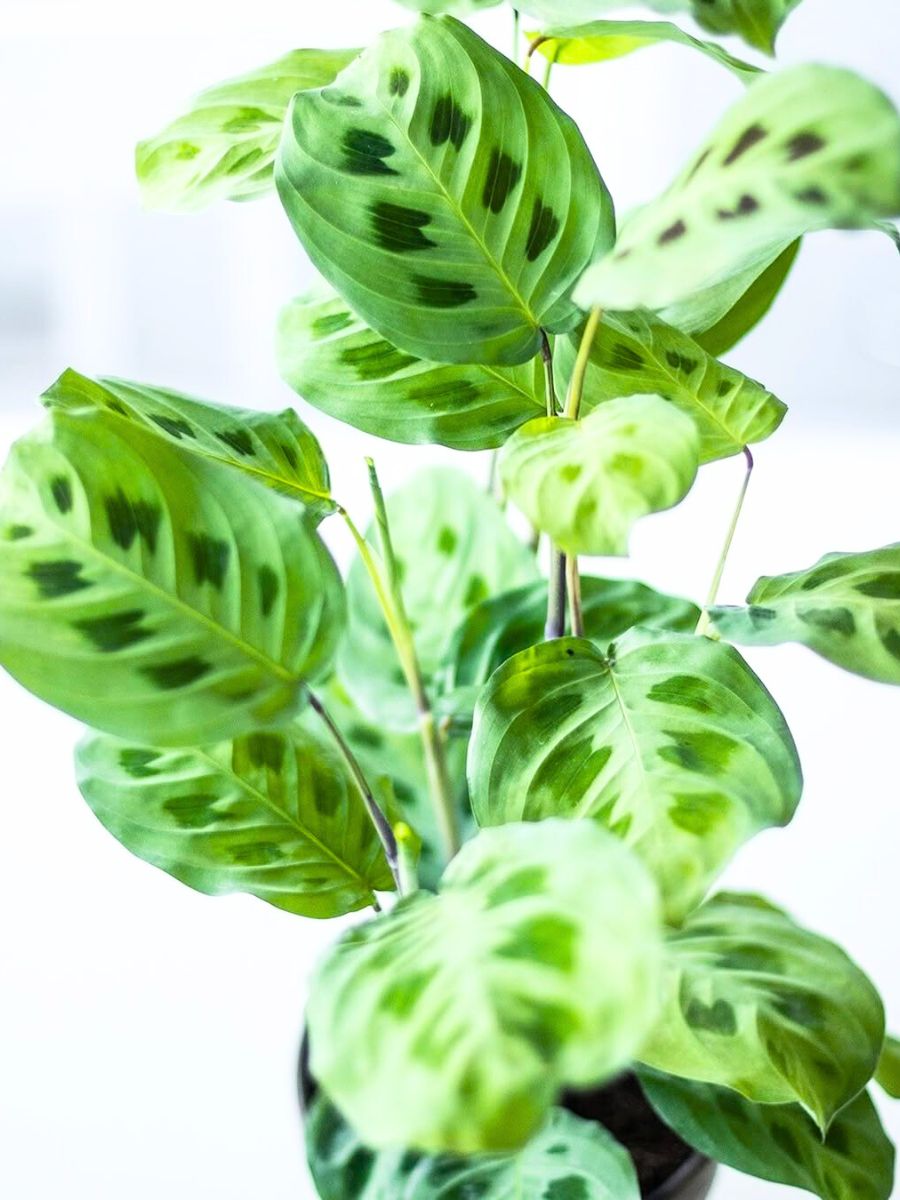
Maranta Leuconeura Massangeana
This variation has white leaf veins, a midrib covered with silvery spots, and a darker leaf background.
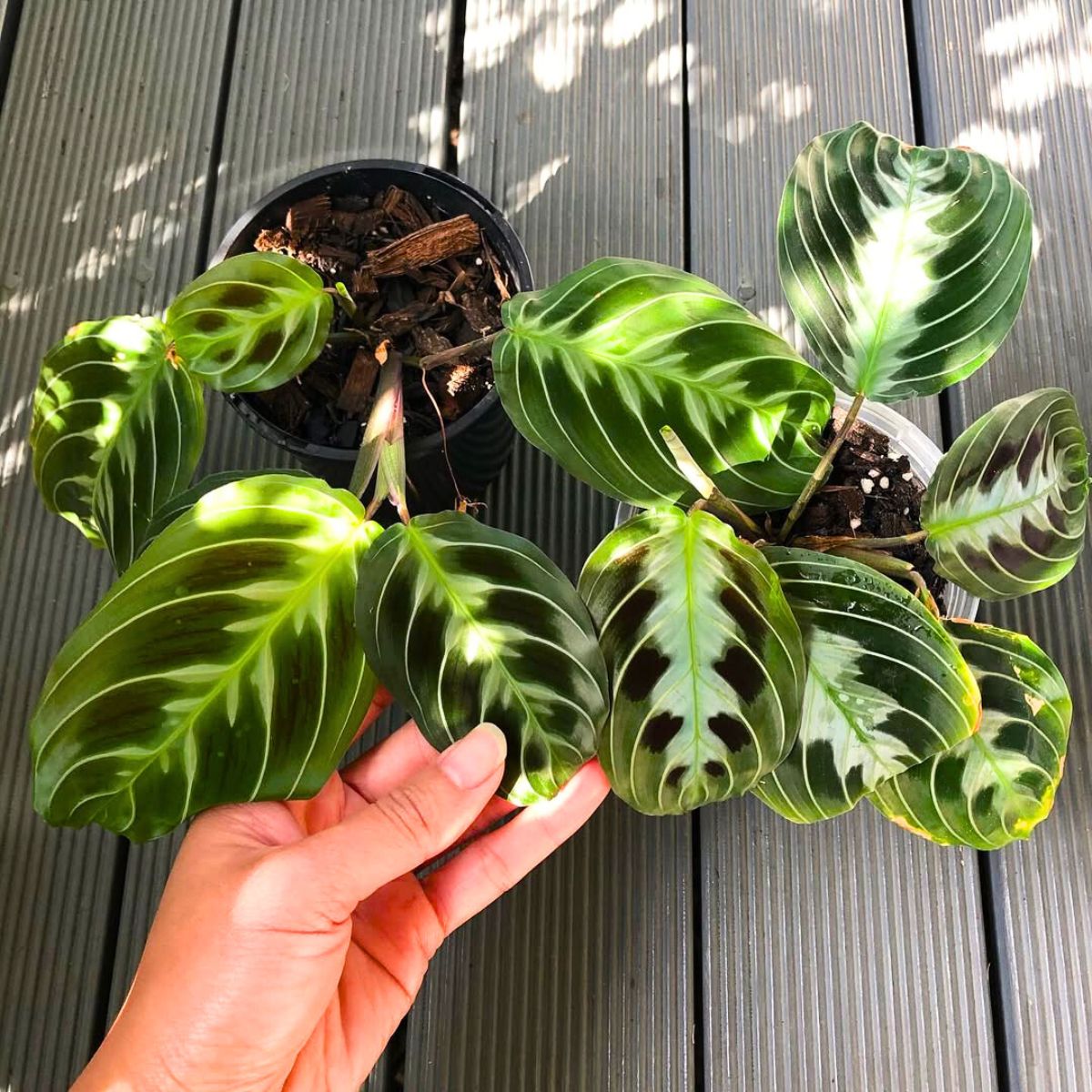
Propagation of the Prayer Plant
Propagating prayer plants is a surprisingly easy way to increase your collection and make use of larger mother plants. The most common (and easiest) way to propagate prayer plants is to divide the plant while repotting. Here are some great tips to successfully propagate your prayer plant:
- Shake the soil from the roots gently and separate them to create multiple tiny plants when repotting your prayer plant.
- Make sure each new plant has many stems and a substantial number of roots.
- Separately plant these new, smaller plants in shallow pots.
- Until new growth starts to appear, keep fresh divisions very warm and moist over the first two weeks.
A Houseplant That Is Safe for Children and Pets
What is better than having your favorite houseplant around your house, plus the fact that it is completely non-toxic for both children and your beloved pets? One more reason why it's considered one of the best houseplants to have at home.
Common Pests Found in the Prayer Plant
Like many other houseplants, prayer plants can be prone to spider mites and mealybugs. If you notice signs of infestation, such as a white powdery substance on the leaves or browning of the foliage, you can treat your plant with a natural insecticide such as neem oil.
Fun Fact About the Prayer Plant
When, why, and how do prayer plants move and 'pray'? Prayer Plant leaves constantly move during the day, but most dramatically when they shift up in a vertical “praying hand” position in the evening. The motion comes from the movement of liquid in special cells at the base of each leaf. Prayer Plants move in reaction to the amount of light in their environment, but no one is 100% sure why they evolved to move this way.
Marantas and their relatives display nyctinastic movement, sometimes called sleeping movement, in response to light levels. These movements function on a 24-hour clock and occur in all the leaves regardless of their size or age. The mechanism behind nyctinasty in the prayer plant is called the pulvinus. Pulvini are located at the base of leaves and are joint-like collections of cells. These cells either swell or contract depending on the amount of liquid present in each. As the size of those cells changes, it creates pressure that results in leaf movement.
Had you ever heard about the prayer plant before? You've now got more than enough reasons to make it part of your houseplant collection.

